
This article was written by Alastair Ritchie, who is one of our young volunteers. He recently completed The Prince’s Trust Award while volunteering in the Museum.
Ammunition Line Display
A while ago the museum was kindly donated 2 rollers and 4 trestles which we believe were used at the Eastriggs or Longtown depot. Since then we have sought to find a place for them, which we have now found (thanks to Neil McGarva for this suggestion). The items have been arranged in a way which will help to demonstrate their use, under the stairs in front of the window so it will be something for people to see when coming in from the car park or walking round the building.
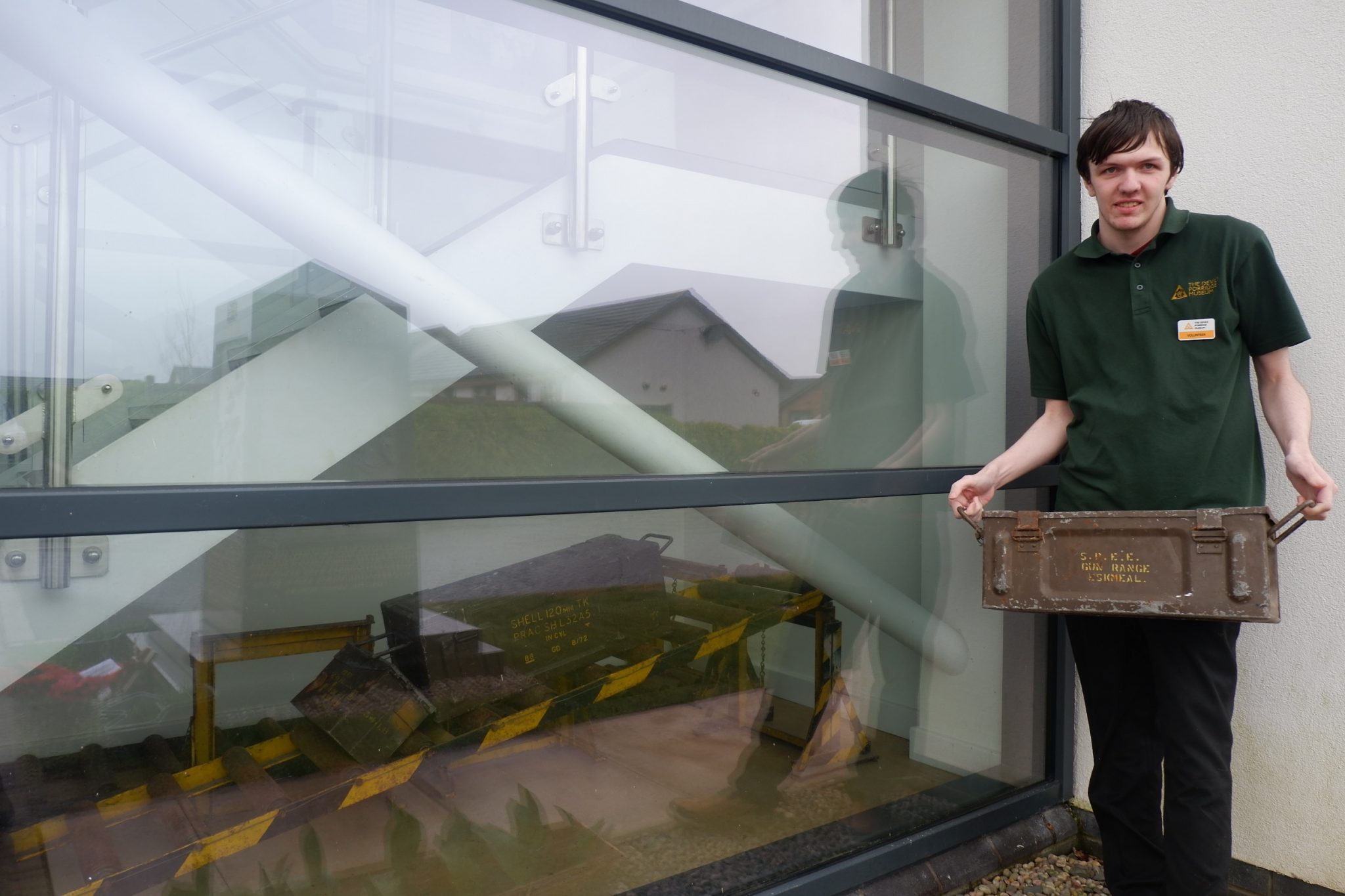
Alastair near the display (which is hard to photograph due to being behind glass). He is holding an ammunition storage box.
Thanks to the efforts of our volunteers Alastair and George along with Digital Marketing Modern Apprentice Morgan, the area has been cleared, cleaned and arranged to ensure it both looks good and gives some insight into how these items might have been used.
If you are interested in some more information on our display then here are a few facts about it…
-
The rollers were used in both WW1 and 2 (some would have been mechanised by the Second World War though) to assist in moving all types of ammo, firstly from the train to the magazine and secondly from one part of the factory to another.
-
The rollers were able to make moving large amounts of tank shells, bullets of all types, artillery shells, bombs though these were limited in type and navy shells more efficient.
-
In order to improve the rollers longevity they were made very durable, requiring little maintenance beyond the occasional greasing and replacing of the yellow and black paint which could easily be done by the women and men who worked with them.
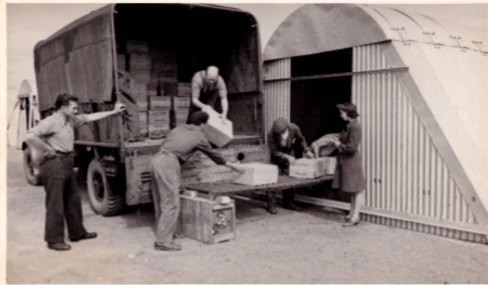
A group of people of load their crate onto the line that then leads into storage where it will stay until use.
-
Rollers could also be set up in long lines that might run up to 6 rollers long, allowing multiple teams to work on different parts, doing a varied tasks including….
-
placing empty open boxes onto the line
-
placing shells into boxes or removing ones from the line to be placed in storage or shipped out
-
sealing boxes
-
taking boxes off to be either placed in storage or on a train to be taken away for use
-
We have been told by Robin, a Trustee at the Museum (he worked within Eastriggs and Longtown depots for many years and is a former Inspector in the Ministry of Defence Police) that at the depot the process was referred to as “hand-balling” by some staff.

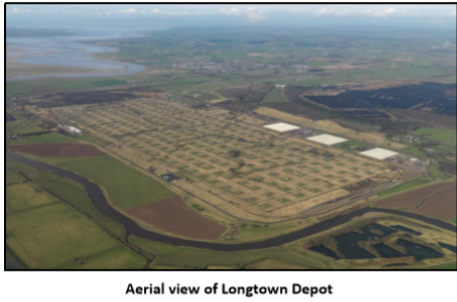
-
The rollers were a earlier version of the modern assembly lines without power and were used throughout the depot until the introduction of forklifts and other modern equipment.
-
In total the Rollers could hold somewhere between 13-15 tons which was vital as the Eastriggs depot could house up to 10–30,000 tons of material while Longtown could hold almost twice that amount as it was split between the COD (Central Ordnance Depot) which stored inert material such as boxes and packaging for various forms of ammunition and the CAD (Central Ammunition Depot) which stored various types of small arms to artillery shell ammunition.
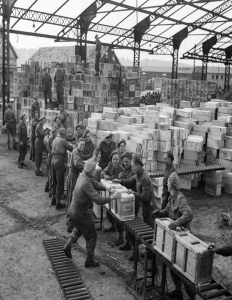
Group of worker using multiple rollers to assist them in moving crates around. This was essentially the rollers job to make moving heavy object safer, easier and most importantly faster.
The following book may be of interest if you would like to know more about the depots and the local area in World War Two:
After this article was published, a member of the public came forward with the following information and photographs, we thank him for sharing this with us:
-
The beginning of the process in what was known as the In-Transit this is where the ammunition/explosives are received into the building
-
Operatives would breakdown the pallets and load the containers/boxes onto the rollers and they would then be pushed through a hatch into the Process area where Ammunition Examiners would carry out various tasks:
-
Safety Inspection
-
Modification
-
Repairs
-
A pedestrian gate in the rollers where examiners could work on both sides of the rollers
-
Once this was done the containers/boxes would be moved along the rollers to the Out-Transit, here operatives would add markings
-
The rollers were used in all types of industry including the ships for deep sea dumping
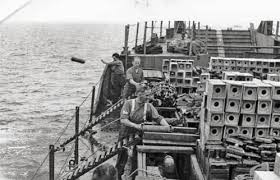
Just after the war some of the excess ammunition was thrown into the sea
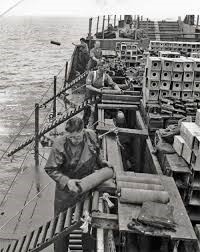
This process was known as Deep Sea Dumping fortunately it is now Banned

